#Blades In The Dark
Photo
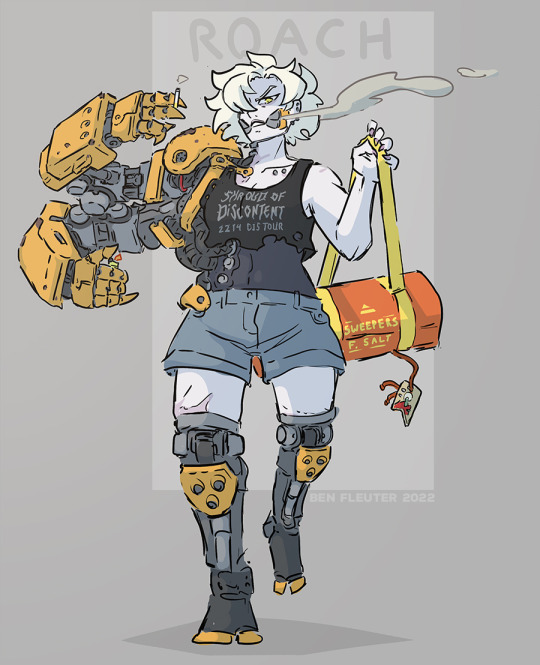

Playing this character in our Cyberpunk BitD campaign while my other character takes a break.
7K notes
·
View notes
Text
"What's the difference between 'Powered By the Apocalypse' and 'Forged in the Dark'" well, you see, the Apocalypse Engine is what convinced indie game designers that character classes are cool again, and Blades in the Dark is what convinced indie game designers that going directly from writing diceless one-page storygames to writing something with Dungeons & Dragons level crunch with absolutely no ramp-up is a reasonable aspiration.
#gaming#tabletop roleplaying#tabletop rpgs#game design#indie games#blades in the dark#apocalypse world#pbta#fitd
1K notes
·
View notes
Text
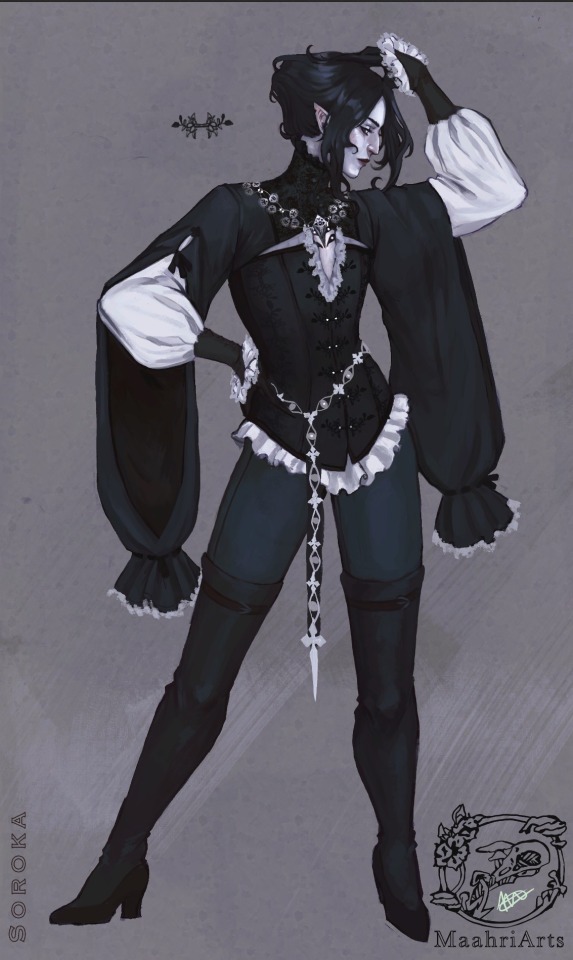
Hark! A magpie
#digital art#art#my art#procreate#female artists on tumblr#Mavka tag#full body#full colour#bitd#blades in the dark#pathfinder#dungeons and dragons#ttrpg art#character design#outfit design
563 notes
·
View notes
Text
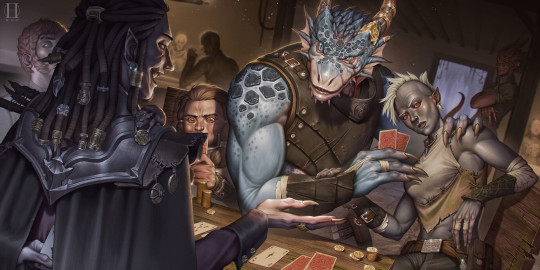
Dm Tip: Playing the Villain/ Guidelines for "Evil" Campaigns
I've never liked the idea of running an evil game, despite how often I've had people in my inbox asking how I'd go about it. I'm all about that zero-to-hero heroic fantasy not only because I'm a goodie twoshoes IRL but because the narrative-gameplay premise that d&d is built around falls apart if the party is a bunch of killhappy murder hobos. Not only would I get bored narrating such a game and indulging the sort of players who demands the freedom to kill and torture at will (I've had those before and they don't get invited back to my table), but the whole conceit of a party falls through when the obviously villainous player characters face their first real decision point and attempt to kill eachother because cooperation is a thing that goodguys do.
Then I realized I was going about it all wrong.
The problem was I had started out playing d&d with assholes, those "murder and torture" clowns who wanted to play grand-theft-auto in the worlds I'd created and ignore the story in favour of seeing how much unchallenged chaos they could create. They set my expectations for what an evil campaign was, and I spent the rest of my time developing as a dungeonmaster thinking " I Don't want any part of that"
But what would an evil campaign look like for my playgroup of emotionally healthy friends who understand character nuance? What would I need to change about the fundamental conceit of d&d adventures to refocus the game on the badguys while still following a similar enough narrative-gameplay premise to a hero game? How do we make that sort of game relatable? What sort of power/play fantasy can we indulge in without going off the deepend?
TLDR: In an evil campaign your players aren't playing the villains, they're the MINIONS, they're mooks, henchmen, goons, lackeys. They're the disposable underlings of uncaring overseers who have nothing but ill intent towards them and the world at large.
Where as in a hero game the party is given the freedom to challenge and overthrow corrupt systems, in an evil game the party is suck as part of that corrupt system, forced to bend and compromise and sacrifice in order to survive. The fantasy is one of escaping that corrupt system, of biding your time just long enough to find an opening, find the right leverage, then tossing a molitov behind you on the way out.
Fundamentally it's the fantasy of escaping a shitty job by bringing the whole company down and punching your asshole boss in the face for good measure.
Below the cut I'm going to get into more nuance about how to build these kinds of narratives, also feel free to check out my evil party tag for campaigns and adventures that fit with the theme.
Designing a campaign made to be played from the perspective of the badguys requires you to take a different angle on quest and narrative design. It’s not so simple as swapping out the traditionally good team for the traditionally bad team and vis versa, having your party cut through a dungeon filled with against angel worshiping holyfolk in place of demon worshipping cultists etc.
Instead, the primary villain of the first arc of the campaign should be your party’s boss. Not their direct overseer mind you, more CEO compared to the middle managers your party will be dealing with for the first leg of their journey. We should know a bit about that boss villain’s goals and a few hints at their motivation, enough for the party to understand that their actions are directly contributing to that inevitable doom.
“Gee, everyone knows lord Heldred swore revenge after being banished from the king’s council for dabbling in dark magic. I don’t know WHY he has us searching for these buried ancient tablets, but I bet it’s not good”
Next, you need a manager, someone who’s a part of the evil organization that the party directly interfaces with. The manager should have something over the party, whether it be threats of force, blackmail, economic dependency… anything that keeps the antiheroes on the manager’s leash. Whether you make your manager an obvious asshole or manipulative charmer, its important to maintain this power imbalance: The party arn’t going to be rewarded when the boss-villain’s plan goes off, the manager is, but the manager’s usefulness to the boss-villain is contingent on the work they’re getting the party to do. This tension puts us on a collison course to our first big narrative beat: do the party get tired of the manager’s abuse and run away? Do they kill the manager and get the attention of the upper ranks of the villainous organization? Do they work really hard at their jobs despite the obvious warning signs and outlive their usefulness? Do they upstage their manager and end up getting promoted, becoming rivals for the boss-villain’s favor?
Building this tension up and then seeing how it breaks makes for a great first arc, as it lets your party determine among themselves when enough is enough, and set their goals for what bettering the situation looks like.
As for designing those adventures, you’ll doubtlessly realize that since the party arn’t playing heroes you’ll need to change how the setup, conflict, and payoff work. They’re still protagonists, we want them to succeed after all, but we want to hammer home that they’re doing bad things without expecting them to jump directly to warcrimes.
Up to no good: The basic building block of any evil campaign, our party need to do something skullduggerous without alerting the authorities. This of course is going to be easier said than done, especially when the task spins out of control or proves far more daunting than first expected. The best the party can hope for is to make a distraction and then escape in the chaos, but it will very likely end with them being pursued in some manner (bounties, hunters, vengeful npcs and the like). Use this setup early in a campaign so you have an external force gunning for your party during the remainder of their adventures.
Dog eat dog: It’s sort of cheating to excuse your party’s villainous actions by having them go up against another villain who happens to be worse than they are. The trick is that we’re not going after this secondary group of outlaws because they’re bad, we’re doing it because they’ve either got something the boss wants, or they’re edging in on the boss’s turf. This sort of plotline sees the party disrupting or taking advantage of a rival’s operation, then taking over that operation and risking becoming just as villainous as that rival happened to be. This can also be combined with an “Up to no good” plot where both groups of miscreants need to step carefully without alerting an outside threat.
The lesser evil: This kind of plot sees your party sent out to deal with an antagonistic force that’s a threat not only to the boss’s plans but to everyone in general. In doing so they might end up fighting alongside some heroes, or accidentally doing good in the long run. This not only gives your party a taste of heroism, but gives them something in their back pocket that could be used to challenge the boss-villain in the future.
The double cross: In order to get what they want, the party need to “play along” with a traditional heroic narrative long enough to get their goal and then ditch. You have them play along specifically so they can get a taste of what life would be like if they weren't bastards, as well as to make friends with the NPCs inevitably going to betray. This is to make it hurt when you have the manager yank the leash and force the party to decide between finishing the job , or risk striking out on their own and playing hero in the short term while having just made a long term enemy. This is sort of plot is best used an adventure or two into the campaign, as the party will have already committed some villainous deeds that one good act can’t blot out.
Next, lets talk about the sort of scenarios you should be looking to avoid when writing an evil campaign:
Around the time I started playing d&d there was this trend of obtusely binary morality systems in videogames which claimed to offer choice but really only existed to let the player chose between the power fantasy of being traditionally virtuous or the power fantasy of being an edgy rebel. Early examples included:
Do you want to steal food from disaster victims? in Infamous
Do you as a space cop assault a reporter who’s being kind of annoying to you? in Mass Effect
Do you blow up an entire town of innocent people for the lols? in Fallout (no seriously check out hbomberguy’s teardowm on fallout 3’s morality system and how critics at the time ate it up)
I think these games, along with the generational backwash of 90s “edge” and 00s “grit” coloured a lot of people's expectations ( including mine) about what a "villain as protagonist" sort of narrative might look like. They're childish exaggerations, devoid of substance, made even worse by how blithely their narratives treat them.
Burn down an inn full of people is not a good quest objective for an evil party, because it forces the characters to reach cartoonish levels of villainy which dissociates them from their players. Force all the villagers into the inn so we can lock them inside and do our job uninterrupted lets the party be bad, but in a way that the players can see the reason behind it and stay synced up with their characters. The latter option also provides a great setup for when the party's actually monstrous overseer sets the inn on fire to get rid of any witnesses after the job is done. Now the party (and their players) are faced with a moral quandary, will they let themselves be accessories to a massacre or risk incurring their manager's wrath? Rather than jumping face first into cackling cruelty, these sorts of quandaries have them dance along the knife's edge between grim practicality and dangerous uncertainly; It brings the player and character closer together.
Finally, lets talk about ending the villain arc:
I don't think you can play a whole evil campaign. Both because the escalation required is narratively unsustainable, but also because the most interesting aspect of playing badguys is the breaking point. Just like heroes inevitably having doubts about whether or not they're doing the right thing, there's only so long that a group of antiheroes can go along KNOWING they're doing the wrong thing before they put their feet down and say "I'm out". I think you plan a evil campaign up until a specific "there's no coming back from this" storybeat, IE letting the Inn burn... whether or not the party allows it to happen, it's the lowest point the narrative will allow them to reach before they either fight back or allow themselves to be subsumed. If they rebel, you play out the rest of the arc dismantling the machine they helped to build, taking joy in its righteous destruction. If they keep going along, show them what they get for being cogs: inevitably betrayed, sacrificed, or used as canon fodder when the real heroes step in to do their jobs for them.
Art
#dm tip#dm tips#writing advice#evil party#drafting the adventure#dnd#d&d#dungeons and dragons#blades in the dark#ttprg#pathfinder
426 notes
·
View notes
Text

Clement Thorn
Commissioned illustration for a TTRPG character from Blades in the Dark. Recently reopened comms by the way ;)
(email [email protected] for inquiries)
3K notes
·
View notes
Photo

I have to point out something that I realised at the weekend:
Candela Obscura is the new Critical Role season
Spencer Starke cites one of his references as Blades in the Dark
Blades in the Dark was created by John Harper, who cites one of his inspirations as Fallen London
That’s... our game. Our single player text based browser game that’s been free to play since 2009
Truly it’s quite a trip to steward a project that has lasted so long and which has such wide ripples in the world.
#fallen london#sunless sea#sunless skies#failbettergames#candela obscura#critical role#blades in the dark
749 notes
·
View notes
Text


I'll draw these better later
The crew in the Blades in the Dark game I'm running tangled with this watchdog hull and didn't have a great time! Its gaze is paralyzing.
A few actions, an electroplasmic bullet, and a lot of migraines later, the cutter twisted its entire head off and took it as a trophy
#my art#blades in the dark#been running more or less vanilla blades for the first time in a while#we've all been deep in hack and homebrew so it's nice to get a refresh
723 notes
·
View notes
Text
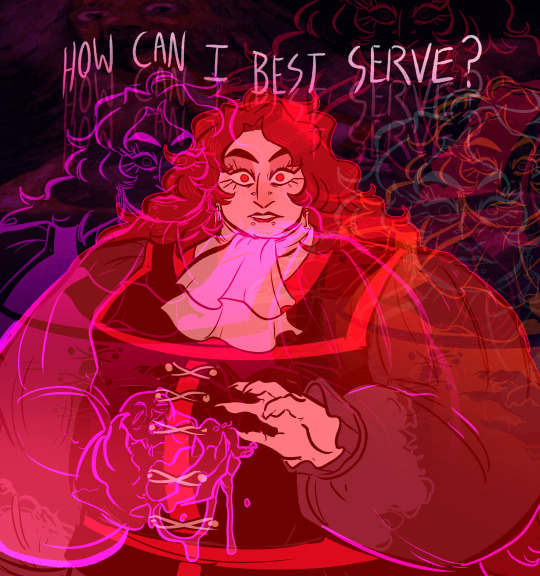
The Blades in the Dark game I'm in is gearing up to kind of enter the endgame, and I haven't done as much nice art of my girl Bat as I want to!!! Here's a little psychedelic eyestrain nonsense for my favorite identity crisis girl, my orgy baby cannibal ex-church shapeshifter.
most art of her looks like this
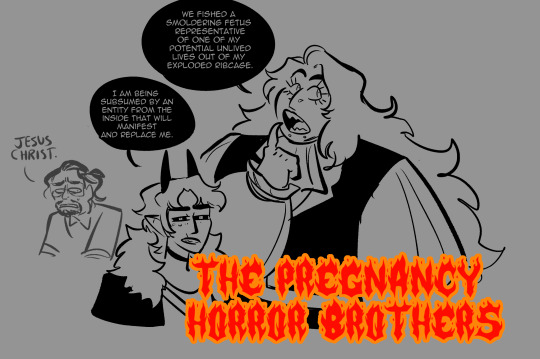
#my characters#batiaca agnusi#eyestrain#body horror#blades in the dark#siphon#catch#doodles#uhhhh ask to tag
200 notes
·
View notes
Text

for some reason im being allowed to play the skeeviest fucktruck alive in my BitD game
#artsy whispers#blades in the dark#lachlan glasgow 'snakeoil'#we are back to no lineart FUCK having lineart
104 notes
·
View notes
Photo
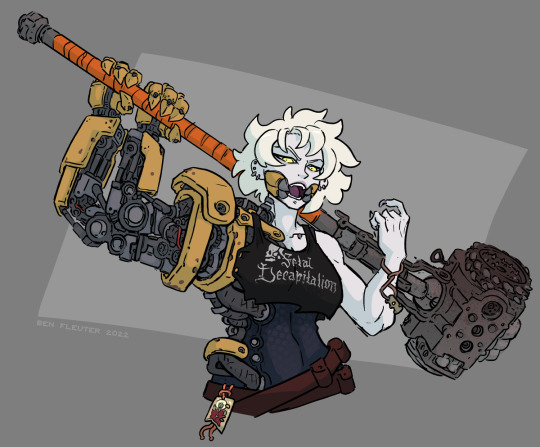
A coooool cyborg.
3K notes
·
View notes
Photo
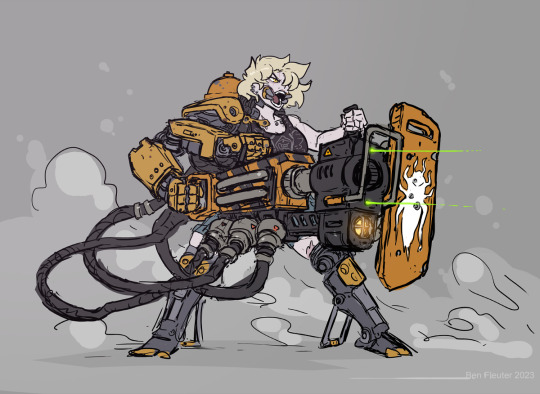
Roach got a new gun.
It was originally a rivet gun meant for the outer-hull of space-stations.
2K notes
·
View notes
Text

Mavka.
Thanatologist. Seeker of truth, hater of fate
#digital art#art#my art#artists on tumblr#BitD#Blades in the dark#portrait#Procreate#mavka#mavka tag#vampire the masquerade#VtM#lasombra#durge#whisper#character design#dungeons and dragons#DnD#TTRPG art#they're gonna do well#They're gonna kill go so good and nothing will or could go wrong#OC art
293 notes
·
View notes
Text

just posting more stuff i have lying around; this is a slight redesign of my old blades in the dark character and i think this looks so fucking poggers
for reference, previous designs under the cut

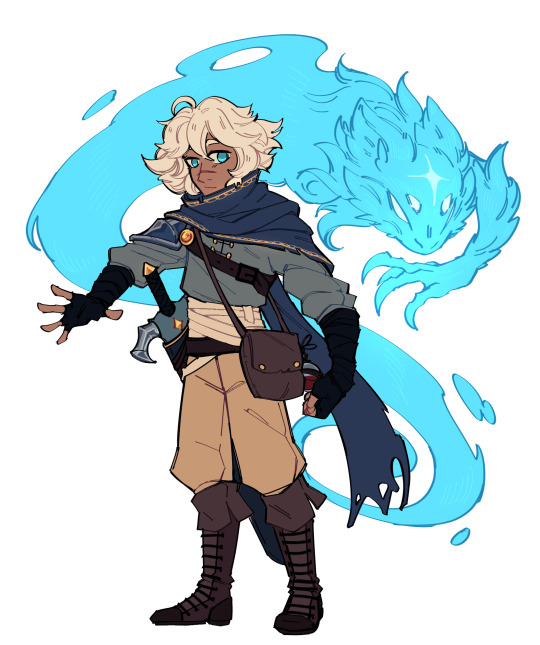
134 notes
·
View notes
Text
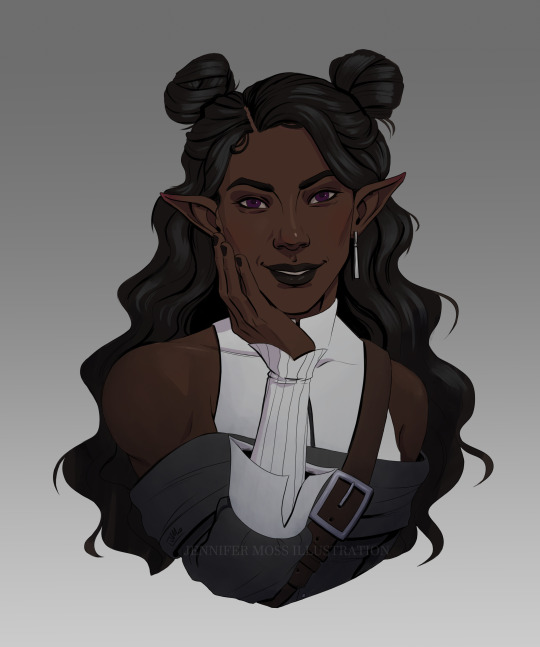
Commission for an OC named Maeza Nayloza, a High Elf Astronomer and Monster Hunter!
Commissions are currently open! Check out my price list on my page if you fancy some art for your OC's 😁
#OC#original character#original character art#dnd#dnd art#dungeons and dragons#pathfinder#bg3#baldurs gate 3#vampire the mascarade#mage the acension#blades in the dark#call of cthulu#shadowrun#commission#commissionart#commissionsopen#character art#artists on tumblr#digital art#my art#jenofthefar art
69 notes
·
View notes
Text

the blades in the dark game i run is 1 year old! i doodled my players' crew to commemorate
65 notes
·
View notes
Photo



More Lark, mostly speculative mutant stuff that may or may not shake out… this game is on hold for a little bit but she’s been sitting on my brain like the little goblin she is, refusing to tell me what her whole deal is gonna be
2K notes
·
View notes